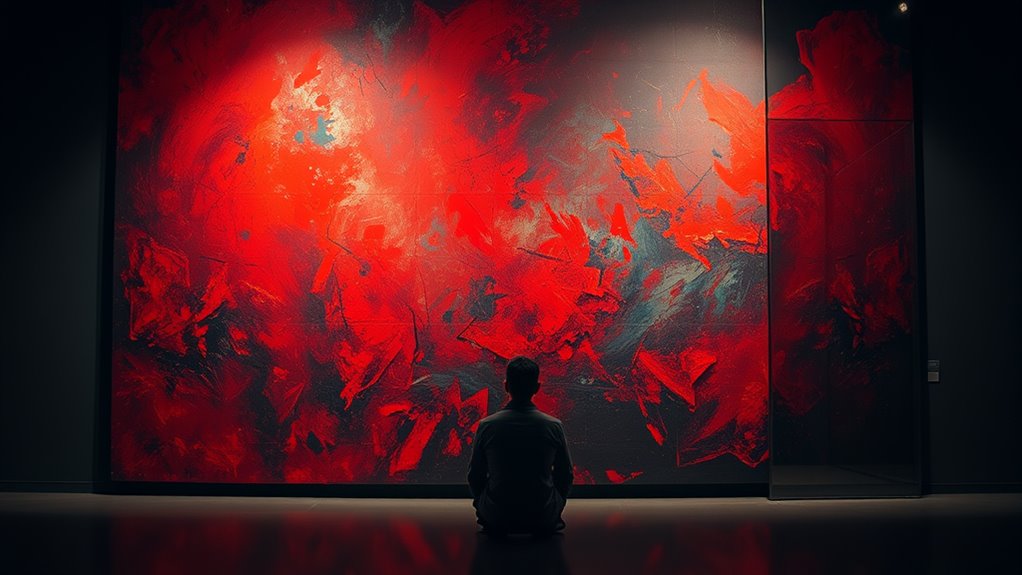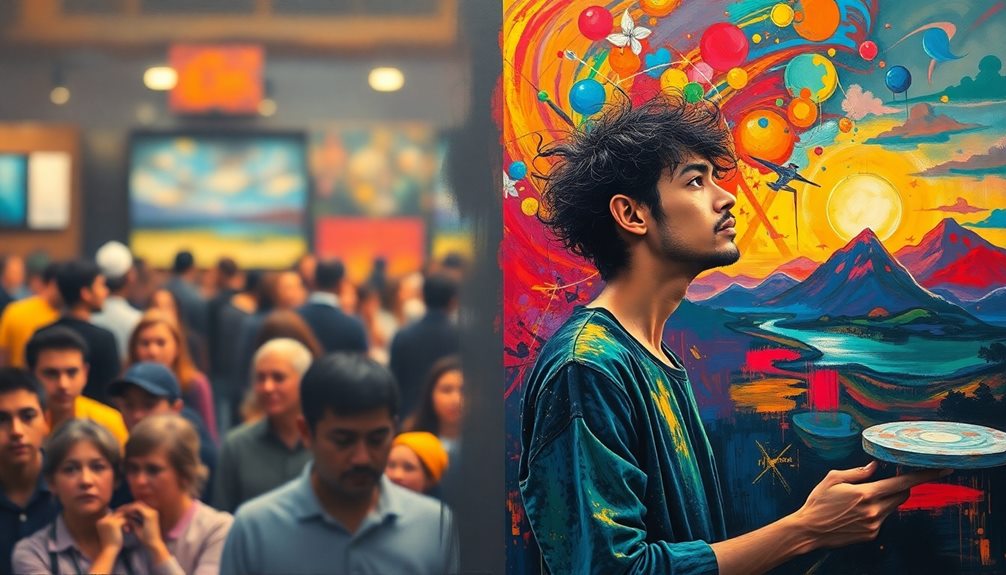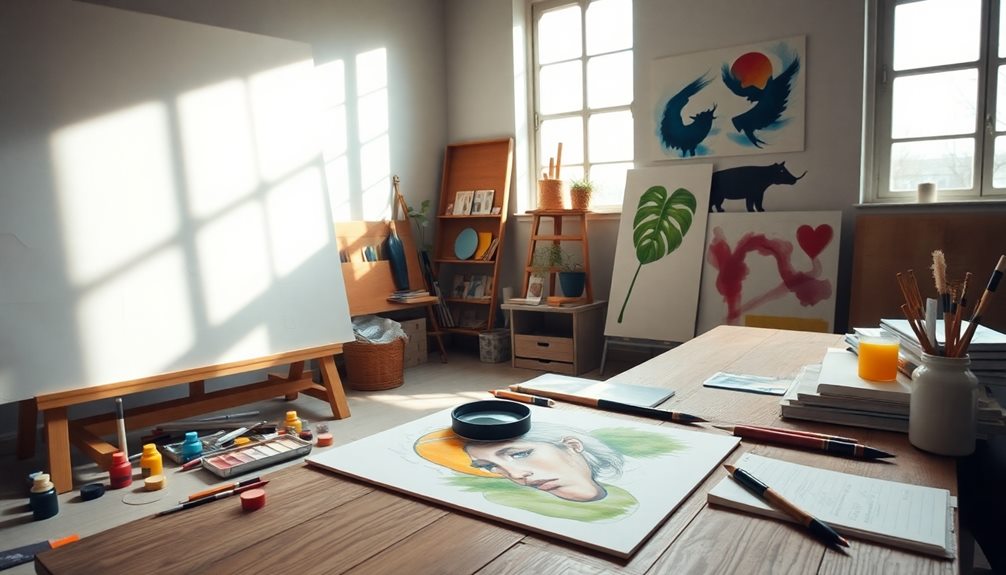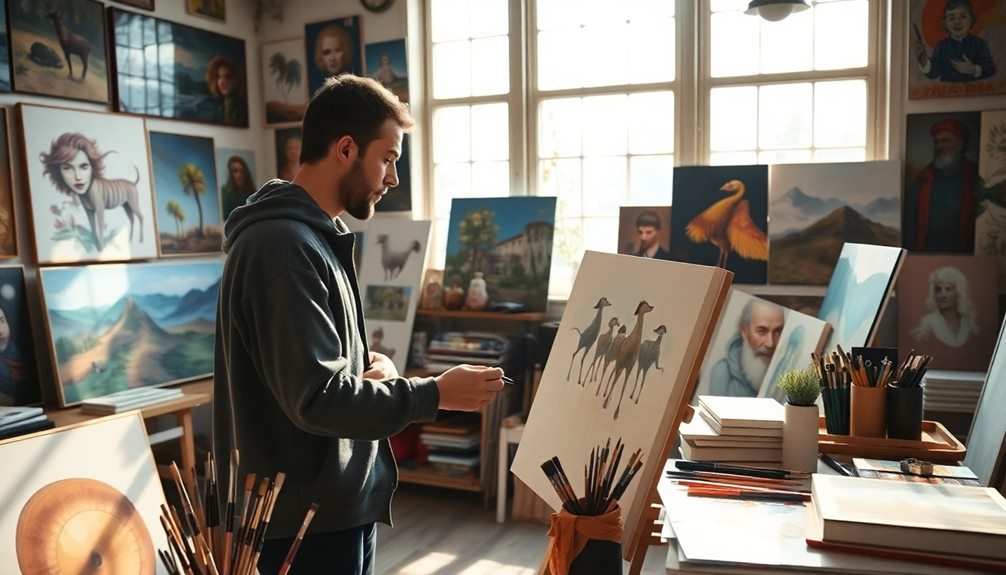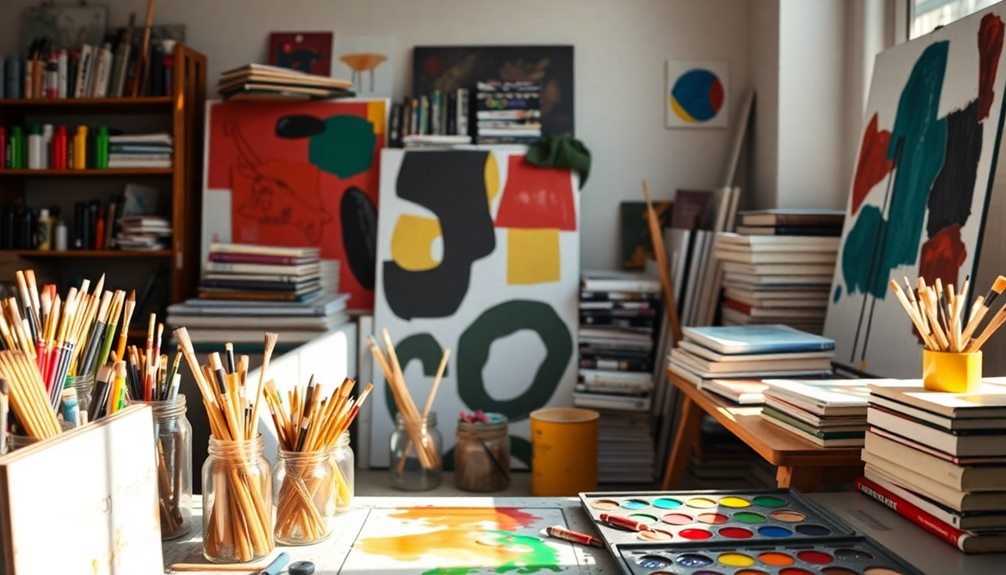Art has the power to evoke deep emotions because it taps directly into your feelings beyond words. Colors, forms, and compositions influence how you perceive and respond, influenced by your past experiences and culture. It serves as a universal language that bypasses logic and connects you to your inner emotional landscape. By understanding how art communicates feelings through symbolism and expression, you can discover why it moves you so profoundly—if you explore further, you’ll uncover even more about this emotional connection.
Key Takeaways
- Colors and visual elements evoke specific emotional responses based on psychological associations.
- Personal experiences and cultural backgrounds shape individual perceptions and feelings toward art.
- Art communicates complex emotions beyond words, creating a deep personal connection.
- Artistic choices like composition and symbolism influence how viewers emotionally react.
- Art reflects human experiences, fostering empathy and emotional understanding through shared expression.
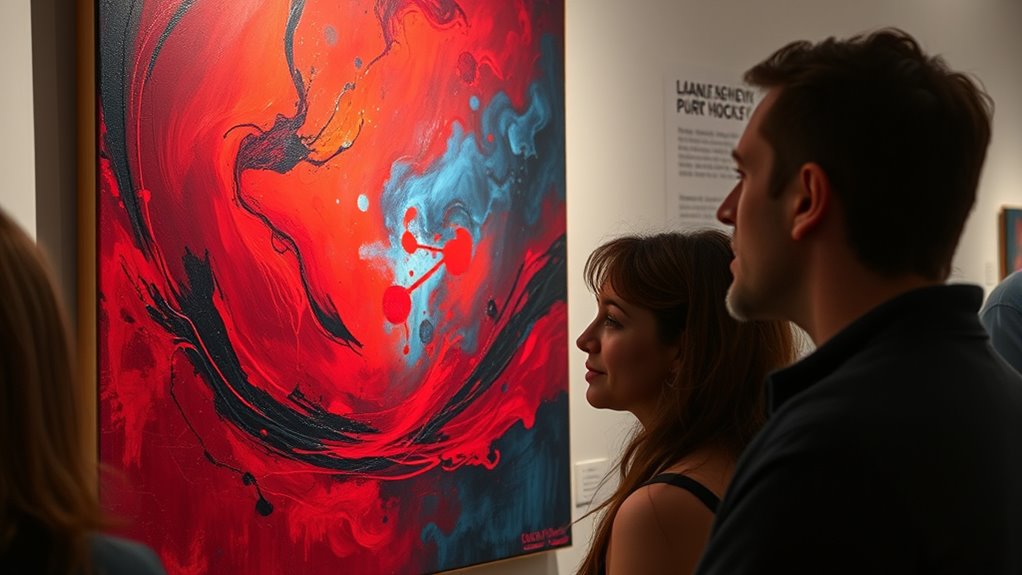
Art has a powerful ability to evoke deep emotions and connect with you on a personal level. When you stand before a painting or a sculpture, it’s not just the visual that impacts you, but the underlying messages conveyed through color, form, and composition. This is where color psychology plays an essential role. Different colors evoke specific feelings—reds can ignite passion or anger, blues often bring calm or sadness, and yellows evoke happiness or energy. As you interpret these colors, you’re engaging in a form of artistic expression that taps directly into your emotional landscape. Art communicates beyond words, allowing you to feel and understand things that might be difficult to articulate otherwise.
Your emotional response to art isn’t accidental; it’s rooted in how your brain processes visual cues and associates them with past experiences or cultural meanings. For example, a vibrant, chaotic abstract piece might stir excitement or confusion, while a serene landscape could inspire tranquility. This emotional resonance is amplified by your personal history—your memories, beliefs, and current mood all influence how you perceive and feel about what you see. Artistic expression becomes a universal language that bypasses logic and hits you straight in the emotional core, creating a powerful connection between the artwork and your inner world. Additionally, understanding the impact of color psychology can deepen your appreciation for how artists evoke specific emotional responses through their choices. Moreover, the diverse designs of art pieces can evoke distinct emotional reactions depending on their style and context. Recognizing the significance of visual symbolism can further enhance your interpretation and emotional engagement with art.
Furthermore, the power of art to evoke emotion lies in its ability to reflect human experiences honestly and vulnerably. When you encounter art that mirrors your struggles or joys, it validates your feelings and fosters empathy. It’s as if the artist is speaking directly to you, sharing a piece of their soul. This shared vulnerability can trigger feelings of hope, sadness, or inspiration, demonstrating art’s capacity to evoke a wide spectrum of emotions. The artist’s choices—brushstrokes, color palettes, composition—are all intentional gestures of artistic expression designed to elicit a response. You’re not just a passive observer; you’re an active participant, interpreting and feeling what the artist intended and what your own emotional lens perceives. Recognizing the universal language of art enhances your understanding of its emotional power and its ability to transcend cultural boundaries. Furthermore, engaging with art through emotional intelligence can deepen your connection and response to its messages.
In essence, art’s emotional impact is a tribute to its power to communicate complex human feelings without words. It taps into your subconscious, activates your senses, and stirs your deepest emotions. Whether it’s a painting, sculpture, or installation, art invites you into an intimate dialogue that can uplift, challenge, or comfort you, making your experience uniquely personal. That’s why, when you engage with art, you’re not just seeing something—you’re feeling something, often more profoundly than words can express.
Frequently Asked Questions
How Does Art Influence Our Emotional Well-Being Over Time?
You might not realize it, but art influences your emotional well-being over time by strengthening your emotional resilience through creative expression. Engaging with art allows you to process emotions, reduce stress, and find comfort in your experiences. Consistently exploring and creating art helps you build a positive emotional foundation, making you more adaptable to life’s challenges and nurturing a deeper connection with your feelings.
Can Art Therapy Effectively Treat Mental Health Issues?
You might wonder if art therapy can effectively treat mental health issues. The answer is yes, as it offers significant therapeutic benefits by providing a safe space for emotional healing. Through creative expression, you can explore feelings, reduce stress, and improve your well-being. Engaging in art therapy helps you process complex emotions, making it a valuable tool for managing mental health challenges and fostering overall emotional resilience.
Why Do Certain Colors Evoke Specific Emotional Responses?
You might wonder why certain colors evoke specific emotional responses. Color psychology suggests that our reactions are rooted in emotional symbolism and cultural associations. For example, red often symbolizes passion or danger, while blue can evoke calmness. These responses are deeply ingrained, influencing how you feel when exposed to different colors. This connection explains why you instinctively associate colors with particular emotions, shaping your perceptions and experiences intuitively.
How Do Personal Experiences Shape Emotional Reactions to Art?
Your personal experiences greatly shape your emotional reactions to art. When you see a piece, your personal memories act as emotional triggers, influencing how you feel. For example, a childhood memory might evoke nostalgia, making you connect deeply with certain colors or subjects. These memories create unique emotional responses, making each viewer’s experience personal and meaningful, and highlighting how your past continually influences your perception of art.
What Role Does Cultural Background Play in Art Perception?
Your cultural background influences how you perceive art through cultural symbolism and perceptual differences. It shapes your understanding of symbols, colors, and themes, making some artworks resonate deeply while others may feel distant or confusing. You interpret visual cues based on your cultural context, which affects your emotional response. Recognizing these influences helps you appreciate diverse perspectives, enriching your experience and broadening your understanding of art’s universal and cultural significance.
Conclusion
You might be surprised to learn that nearly 75% of people say art deeply influences their emotions. When you experience a painting or sculpture, it taps into your feelings and memories in ways words can’t. Art connects us on a personal level, making us feel joy, sadness, or awe. So next time you view art, remember it’s not just visual—it’s an emotional journey that shapes how you see the world around you.
